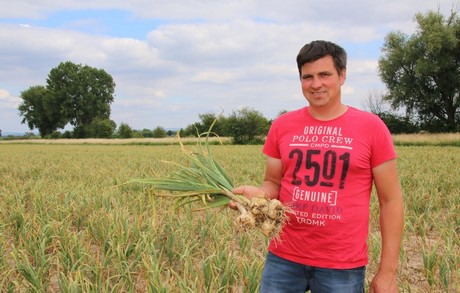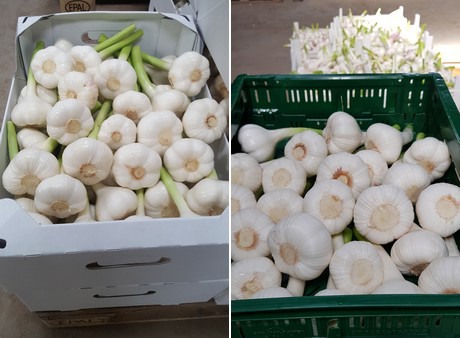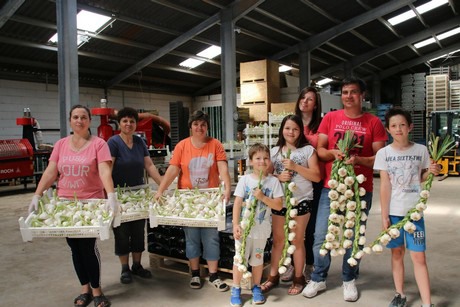In the Palatinate, the local garlic harvest has been going on for a while: Since 15 May - well over a week earlier than usual - Pantiru GbR has been harvesting diligently at the Lampertheim producer. The once exotic tuber is now being grown in Germany on a relatively large scale. In Lampertheim, the garlic acreage has even quadrupled within three years, says owner Konstanze Pantiru. 
Ciprian Pantiru in the garlic field.
This garlic producer started in 2016 on 6 hectares - after the garlic had already been produced incidentally for a few years in his parental vegetable farm. Meanwhile, the total acreage amounts to 24 ha, and people still see possibilities for extension of the production. "We supply both wholesale customers and food retailers. Although German garlic cultivation is not as big as it is, for example, in the Netherlands, the quantities sold and demand in general are gradually increasing every year," says Ms Pantiru. Imported garlic is still cheaper, she admits. "By hand sorting and regional cultivation, however, we already have created added value for the German trade."

Garlic as green onion, already cleaned and stored in boxes.
Weather and regionality
The climatic conditions in the border area between the Palatinate and Hesse are certainly optimal for garlic cultivation as well. The Pantiru family represents the Spanish Planasa company in Germany and exclusively sells the four conventional garlic varieties Gardos, Gardacho, Garcua, and Garpek, which are characterized by a high viral resistance and optimal growth on German soils. "We are in a region of Hesse, which has little rainfall annually and relatively hot summers recorded.We are among the warmest regions in Germany.It is unfortunately not the same every year and too high rainfall during the harvest time can bring loss of yield not all regions of Germany are suitable for garlic cultivation," explains Ms Pantiru.
The early variety Garpek is currently harvested, later the other varieties are added. Pantiru: "Last year we were able to deliver our fresh garlic until the end of August and we hope to extend the campaign into September this year, the current sales are good, but I do not know if demand is still rising, not all Shops have regional garlic in their assortment."

Slight delay of growth
So this is still a niche market, says the dedicated producer. To be able to sell more, one sometimes has to give a discount. "Especially the Garcua and Gardacho varieties are good as fresh garlic, because they are white and they are big, but now it is very hot and we have to see that the garlic still gets some water, the may was relatively cold and as a result, the garlic has grown more slowly, so many varieties will be harvested later this year."

Romanian seasonal workers hand processing fresh garlic
For more information:
Pantiru Knoblauchkulturen GbR & Saatguthandel
GF: Ciprian und Konstanze Pantiru
In den Gärten 5
68623 Lampertheim
Tel: +49 (0)6206 1556140
Ciprian Pantiru: 0173 1065833
Konstanze Pantiru: 0174 4678858
E-Mail: pantiru.ciprian@t-online.de
www.pantiru-knoblauchkulturen.de
